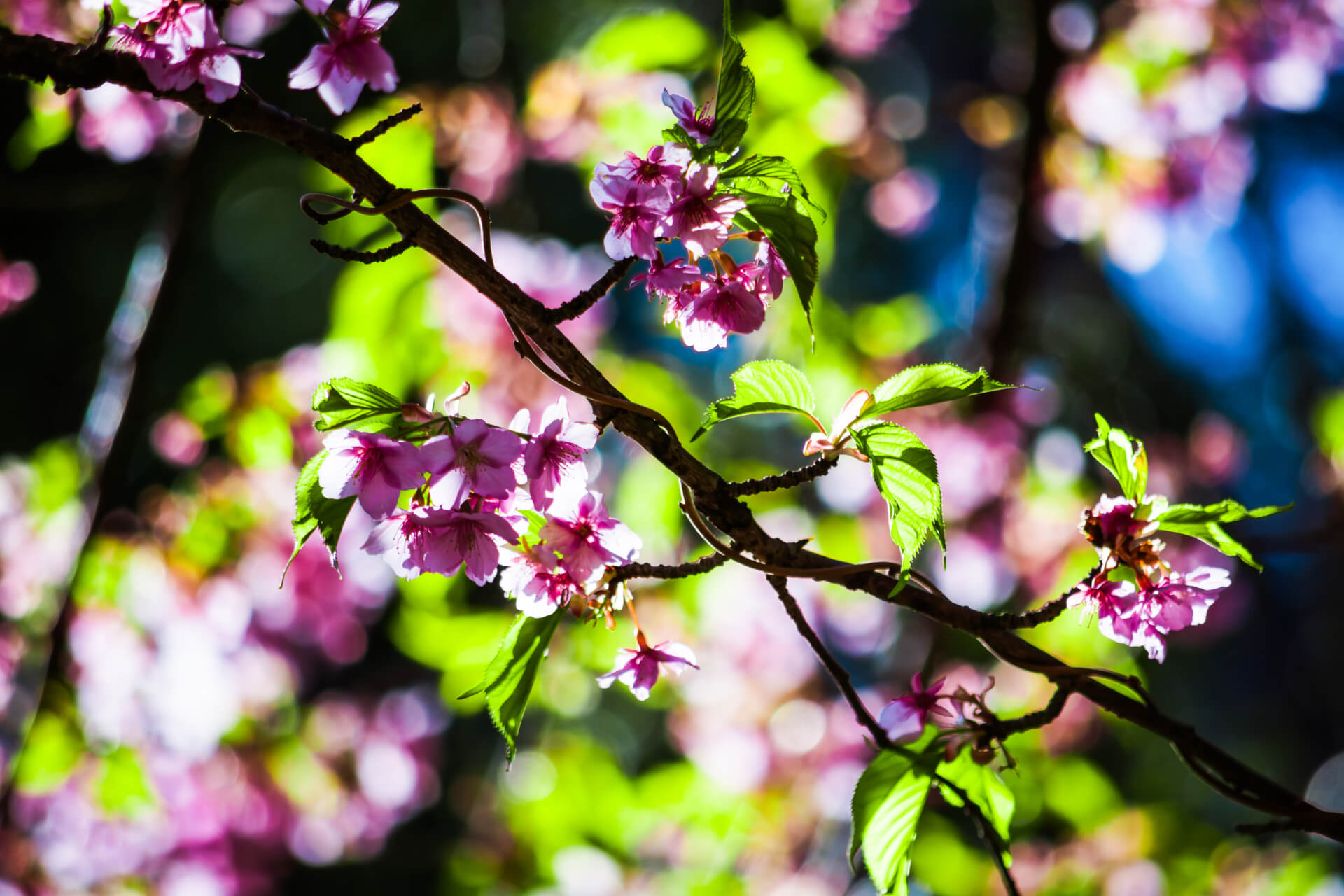HAZAKURA at Kawazu Cherry Blossoms
In the heart of spring, as the vibrant hues of cherry blossoms begin to fade, a new spectacle of nature unfolds, marking a poignant transition in the Japanese landscape. This is the season of Hazakura, where the once blossom-laden cherry trees embrace a fresh verdure, their new leaves budding forth in vibrant green. Hazakura, literally translating to “leaf cherry tree,” signifies the state after the cherry blossoms have fallen, and the trees don lush, young leaves.
Often referenced in April greetings, Hazakura embodies a deep seasonal sentiment, evoking a profound appreciation for the fleeting moments of natural beauty. The green of Hazakura presents a contrast to the delicate pink petals of cherry blossoms, offering a different charm that signals the end of spring and the onset of early summer.
Beyond their visual appeal, these cherry leaves hold culinary significance. Preserved in salt, they are utilized in traditional Japanese sweets, infusing a subtle cherry aroma into delicacies such as sakura mochi, ice cream, and cookies. This practice celebrates not only the aesthetic beauty of cherry blossoms but also the flavors of the season, allowing a sensory appreciation that extends beyond the visual spectacle.
Hazakura is more than a mere phase in the annual cherry blossom cycle; it symbolizes the continuous beauty of nature, inviting observers to find new discoveries and beauty in the changes that each season brings. It stands as a poetic reminder of nature’s cyclic beauty, from the breathtaking bloom of cherry blossoms to the serene elegance of new leaves signaling the transition from spring to summer.
As the Kawazu cherry blossoms, known for their early bloom, give way to the season of Hazakura, one can’t help but feel a special affinity for this period. The transformation from a blanket of pink to a canopy of green highlights a captivating charm unique to this phase of the cherry trees’ life cycle. It serves as a testament to the ever-changing beauty of nature, encouraging a deeper appreciation for the subtleties and transitions that define the Japanese experience of the seasons.

